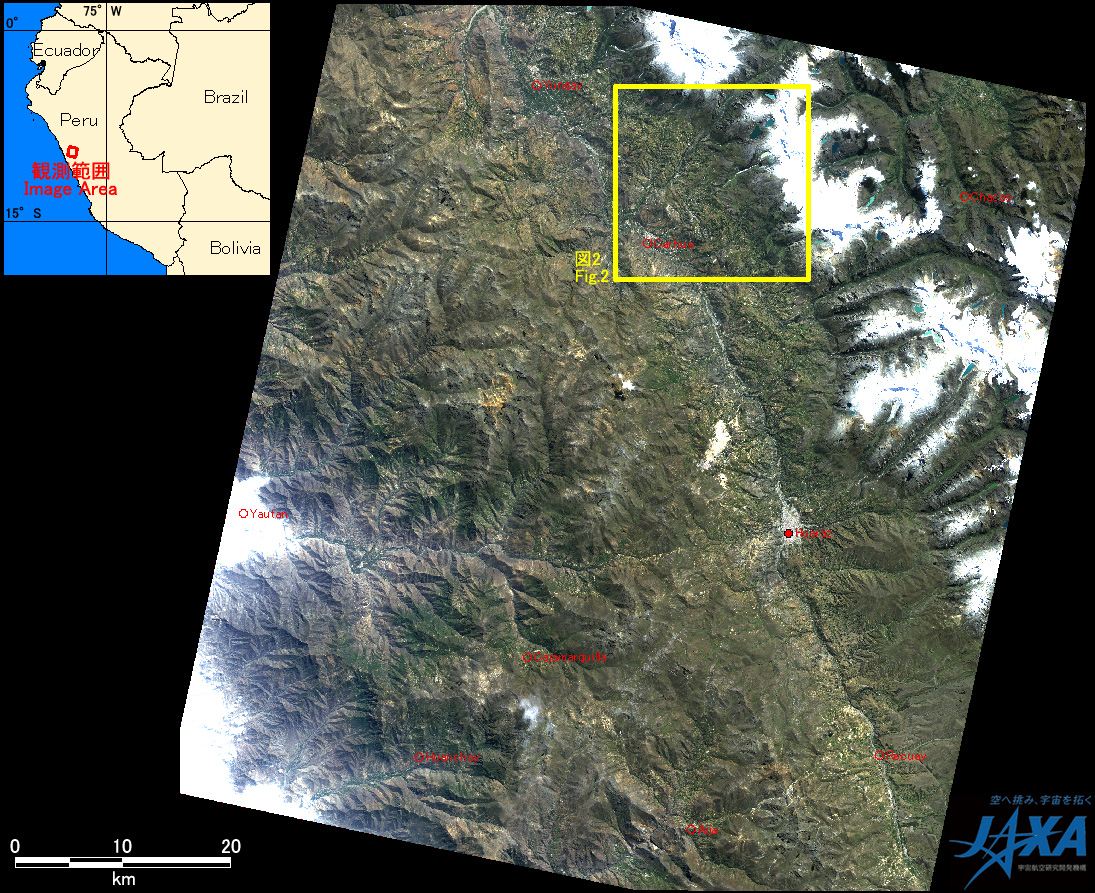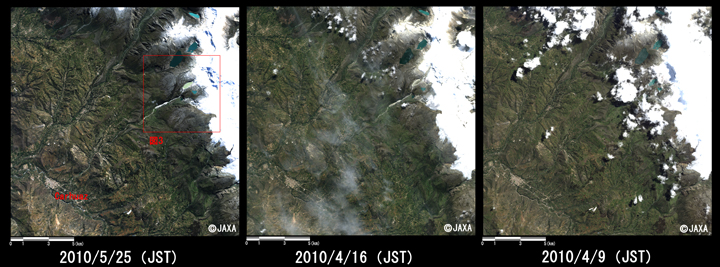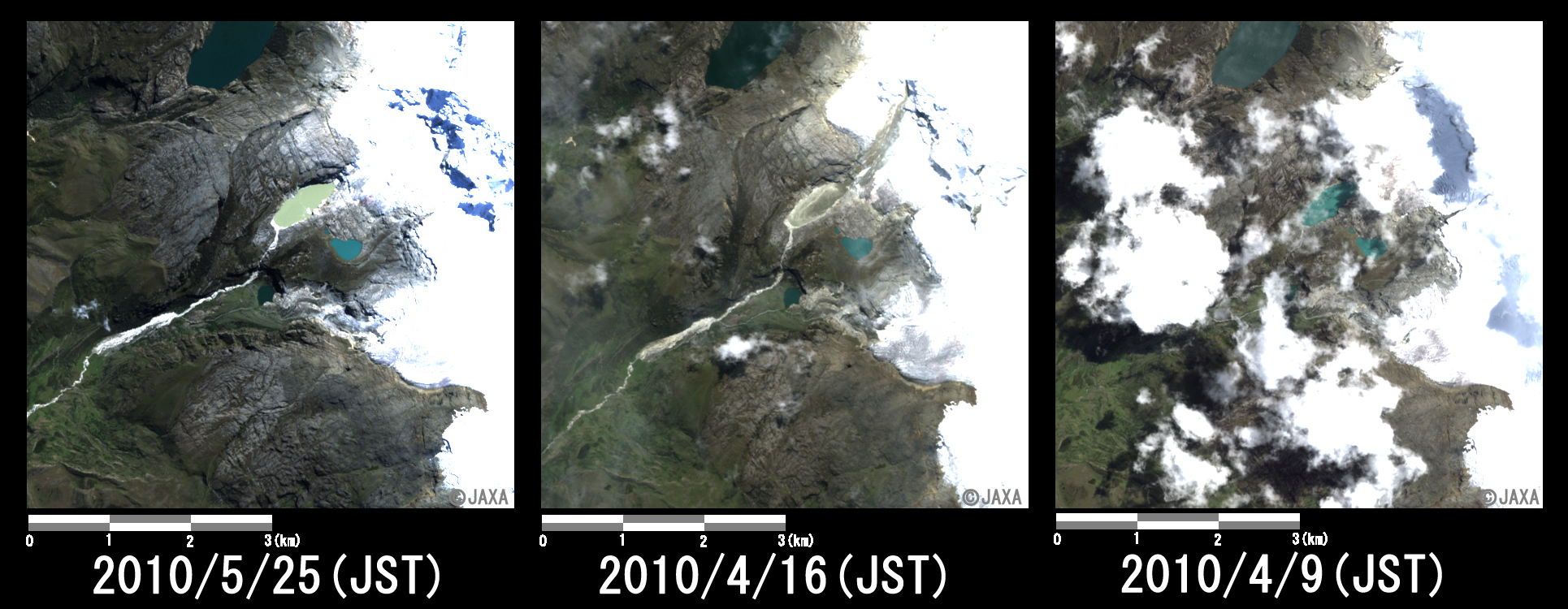Image Library
Follow-up Observation of the Glacial Lake Outburst Flood (GLOF) Damage in the Andean Cordilleras, Peru by AVNIR-2 onboard "Daichi" (ALOS)
On April 11, 2010, a Glacial Lake Outburst Flood (GLOF) occurred from a glacier lake of Hualcan Glacier in the Andean Cordilleras, Peru, South America. According to local newspapers, the GLOF was occurred by falling an ice gorge or rock onto the lake, which has a size of 500 meters long and 200 meters wide, and generated twenty-three meters height a tsunami on the lake water. The lake water overflowed and the downriver town was damaged by the GLOF. The Japan Aerospace Exploration Agency (JAXA) had performed emergency observations of the Advanced Land Observing Satellite (ALOS, "Daichi") to monitor the state of damage caused by the GLOF on April 16, 2010 (Japan Standard Time, JST) or April 15, 2010 (UTC). The Advanced Visible and Near Infrared Radiometer type 2 (AVNIR-2) onboard the ALOS was activated on 0:35 of May 25, 2010 (JST) to determine the state of recovery there.
Fig. 1 shows an observed image in the Andean Cordilleras, Peru. The Hualcan Glacial Lake in Huascaran National Park is located about thirty-six kilometers north from Huaras in the Ancash.JAXA plans continuous observation of this area.


